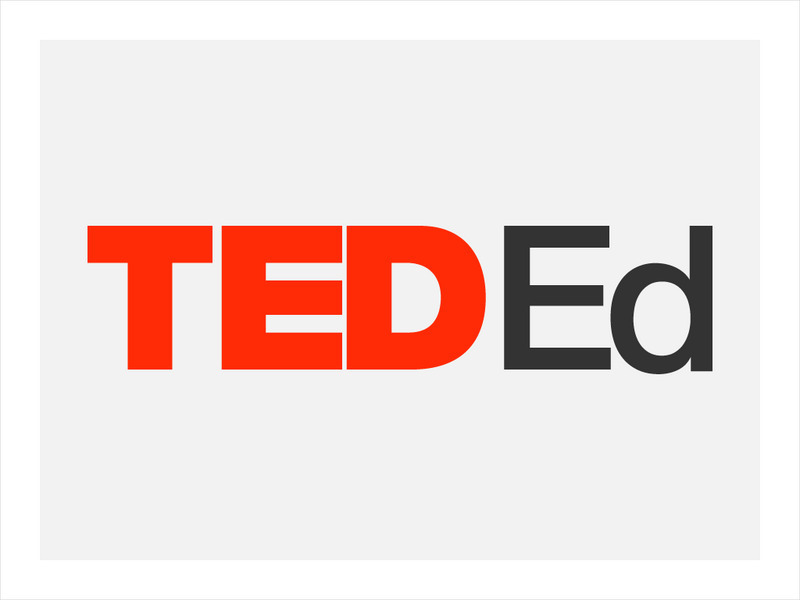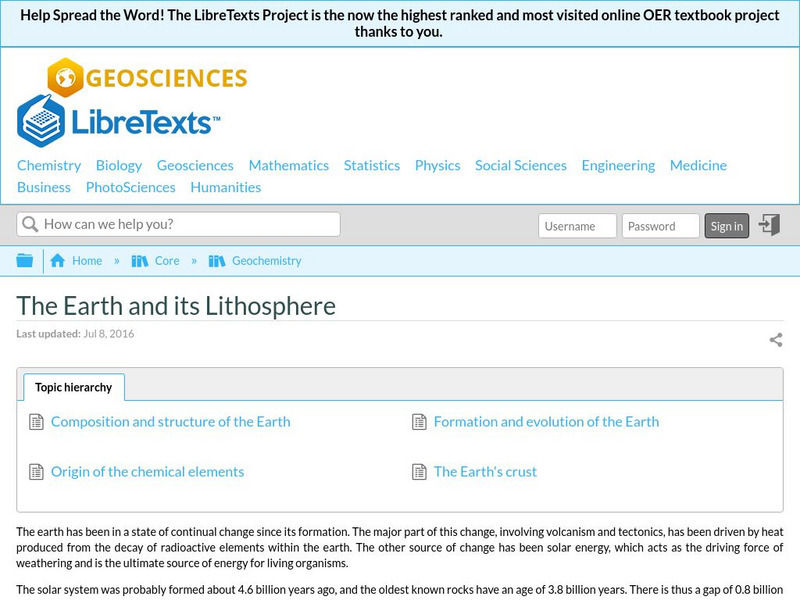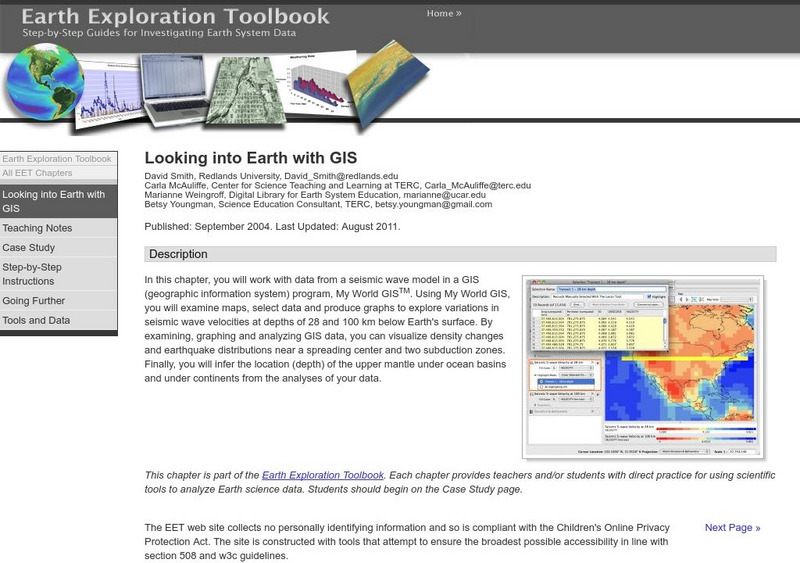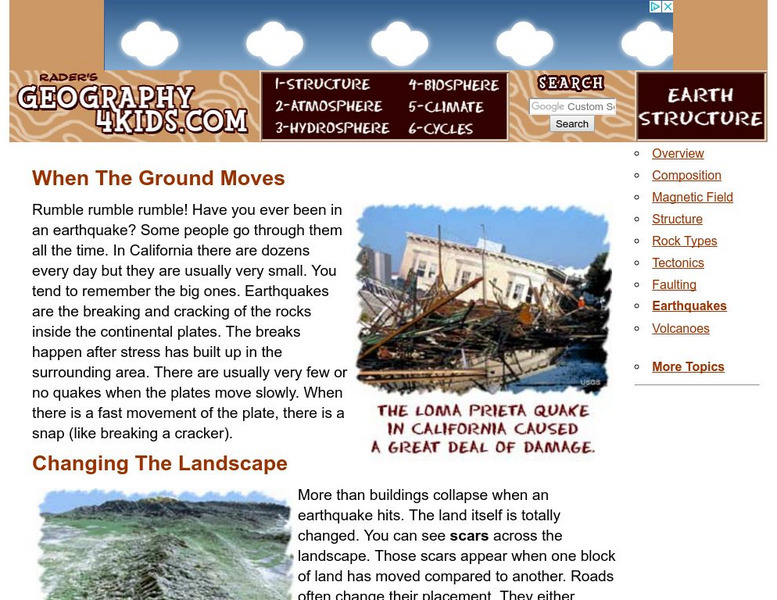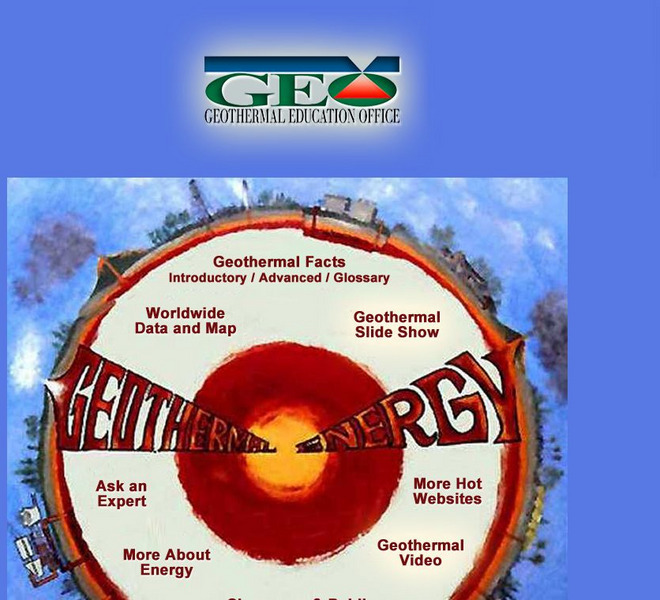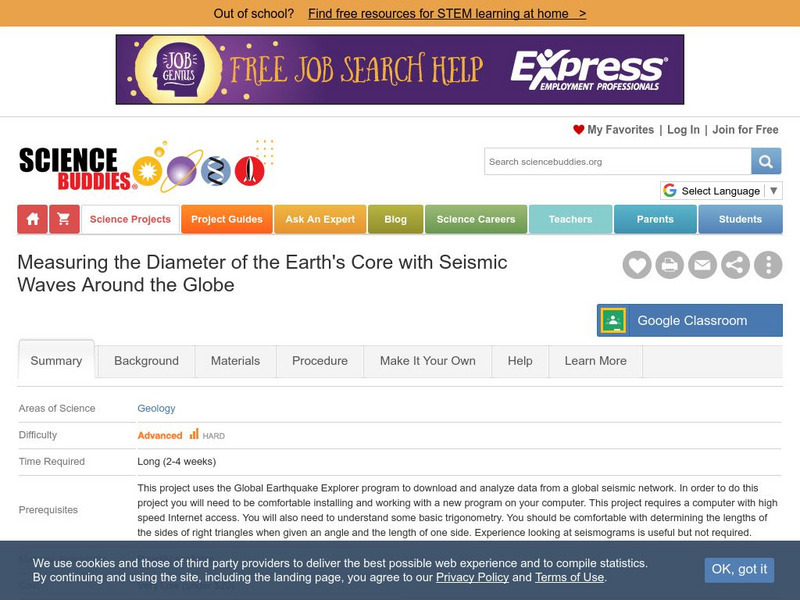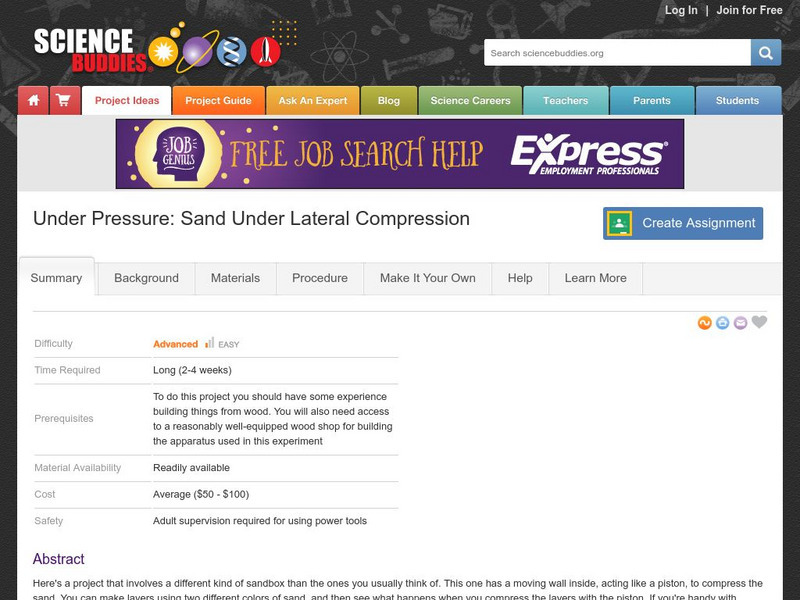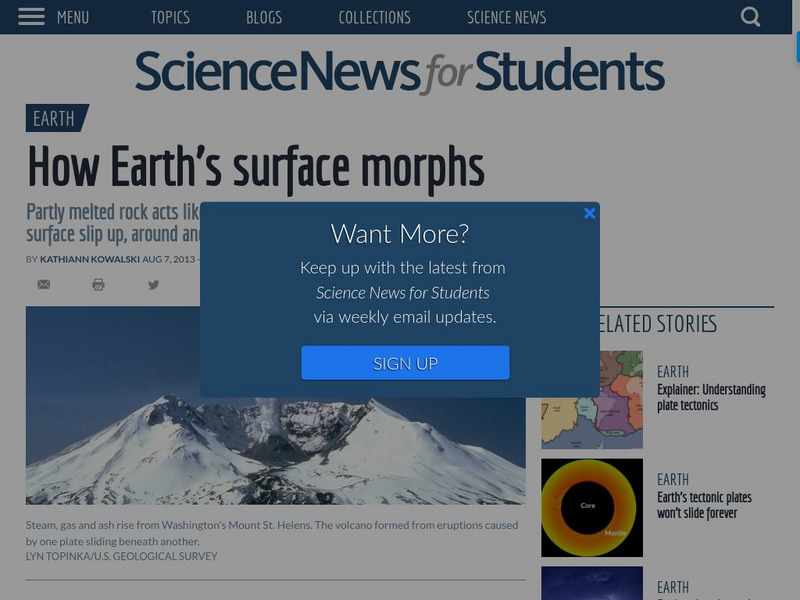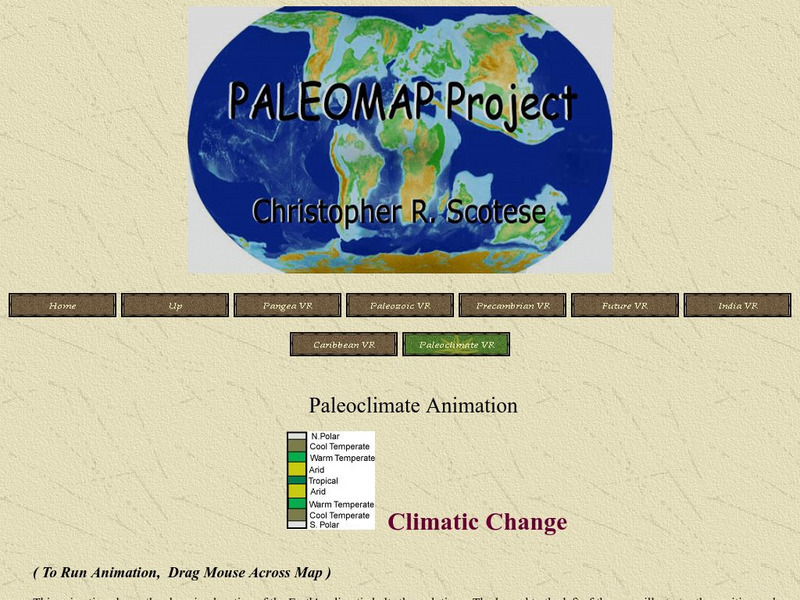Khan Academy
Khan Academy: Gallery: How Do Earth and Life Interact?
Explore the biosphere, zoom in on some unique ecosystems, and learn how activity in the Solar System and plate tectonics can affect the climate and life on the planet.
Bill Nye
Bill Nye: Move Mountains
This tutorial from Bill Nye uses newspaper to show how tectonic plates can crush together to create mountains.
TED Talks
Ted: Ted Ed: Making a Ted Ed Lesson: Bringing a Pop Up Book to Life
In 'The Pangaea Pop-up' Lesson, animator Biljana Labovic decided the best way to illustrate moving, shifting tectonic plates was to use a physical object that could also move and shift. Here, Labovic explains how she and her team of...
Read Works
Read Works: Slow and Steady
[Free Registration/Login Required] An informational text about tectonic plates and how their slow and steady movements have helped to shape the earth. A question sheet is available to help students build skills in reading comprehension.
University of Wisconsin
Scien Count Ers: Earthquake Proof Buildings
This instructional activity looks at how the forces of an earthquake impact on buildings, and different ways to make buildings earthquake-proof. Includes student worksheet and tectonic plates map.
Burke Museum
Burke Museum: Earthquake Science
This section of the Burke Museum's online exhibit on earthquakes and natural disasters focuses on the science of earthquakes. Topics that are covered include plate motion, heat, interior of the earth, and more.
Libre Text
Libre Texts: Geochemistry: The Earth and Its Lithosphere
The Earth has been in a state of continual change since its formation. The major part of this change, involving volcanism and tectonics, has been driven by heat produced from the decay of radioactive elements within the Earth. The other...
Science Education Resource Center at Carleton College
Serc: Looking Into Earth With Gis
Multi-instructional activity activity where learners will work with data from a seismic wave model in a GIS (geographic information system) program. They will examine maps, select data, and produce graphs to explore variations in seismic...
Science Struck
Science Struck: Earthquakes and Volcanic Eruptions
Explains what earthquakes and volcanic eruptions are and how they are related.
Geography 4 kids
Geography4 kids.com: When the Ground Moves
Understand the process of an earthquake.
Other
Geothermal Education Office
This resource for geothermal energy education features a slide show with instructive graphics.
American Geosciences Institute
American Geosciences Institute: Oceans
Seven hands-on lessons module in which students explore oceans. Inquiry-based investigations include properties of seawater, ocean water and currents, and features of the ocean floor.
Story Behind the Science
Story Behind the Science: Development of a Mechanism for Continental Drift [Pdf]
Article describing the history of scientific theories about continental drift, and the major researchers involved in this work.
Science Buddies
Science Buddies: Measuring the Earth's Core With Seismic Waves
When an earthquake occurs, seismic shock waves travel out through the earth from the source of the event. The shock waves travel through the earth (body waves), or along the Earth's surface (surface waves), and can be recorded at remote...
Science Buddies
Science Buddies: Under Pressure: Sand Under Lateral Compression
Here's a project that involves a different kind of sandbox than the ones you usually think of. This one has a moving wall inside, acting like a piston, to compress the sand. You can make layers using two different colors of sand, and...
Society for Science and the Public
Science News for Students: How Earth's Surface Morphs
Article reports on how the surface of the Earth changes over time. Includes a list of vocabulary words from the article.
Other
Paleoclimate Animation
This animation allows you to see how the continent's climates changed as they drifted throughout history.
PBS
Pbs: A Science Odyssey
Website for the PBS series "A Science Odyssey." Numerous opportunities to explore the people and discoveries of science.
Other
Usgs: Geology in the Parks
Details regarding the geology of national parks in the United States.
US Geological Survey
Usgs: The San Andreas Fault
A great overall site that tells us about the San Andreas fault, where it is and what kind of movements have occurred. It then goes on to talk about earthquakes in general and their occurrences along fault lines.
NOAA
Noaa: National Ocean Service Education: Global Positioning Tutorial
Illustrated tutorial explains the history and science of geodesy. Animations help students visualize how scientists measure and monitor the size and shape of the Earth and the location of points on its surface.
PBS
Pbs News Hour Extra: You Don't Need a Seismograph to Study Earthquakes
Three part lesson plan will provide students with information about earthquakes and how to predict them using various Web sites. Activities include historical background on major earthquakes, investigating mechanical waves, and...
Virtual Museum of Canada
Virtual Museum of Canada: Mt. Logan: Canadian Titan
Mt. Logan in Canada's Yukon Territory is the tallest mountain in Canada and the second tallest in North America. Learn about the people who live around it, the history of mountaineering in the area, and the science - both geological and...
Other popular searches
- Plate Tectonics Activities
- Plate Tectonics Pangaea
- Science Plate Tectonics
- Lessons on Plate Tectonics
- Theory of Plate Tectonics
- Plate Tectonics Lab Activity
- Modeling Plate Tectonics
- Evidence for Plate Tectonics
- Plate Tectonics Theory
- Plate Tectonics Word Search
- Plate Tectonics and Tsunamis
- Plate Tectonics Pangaea Map




